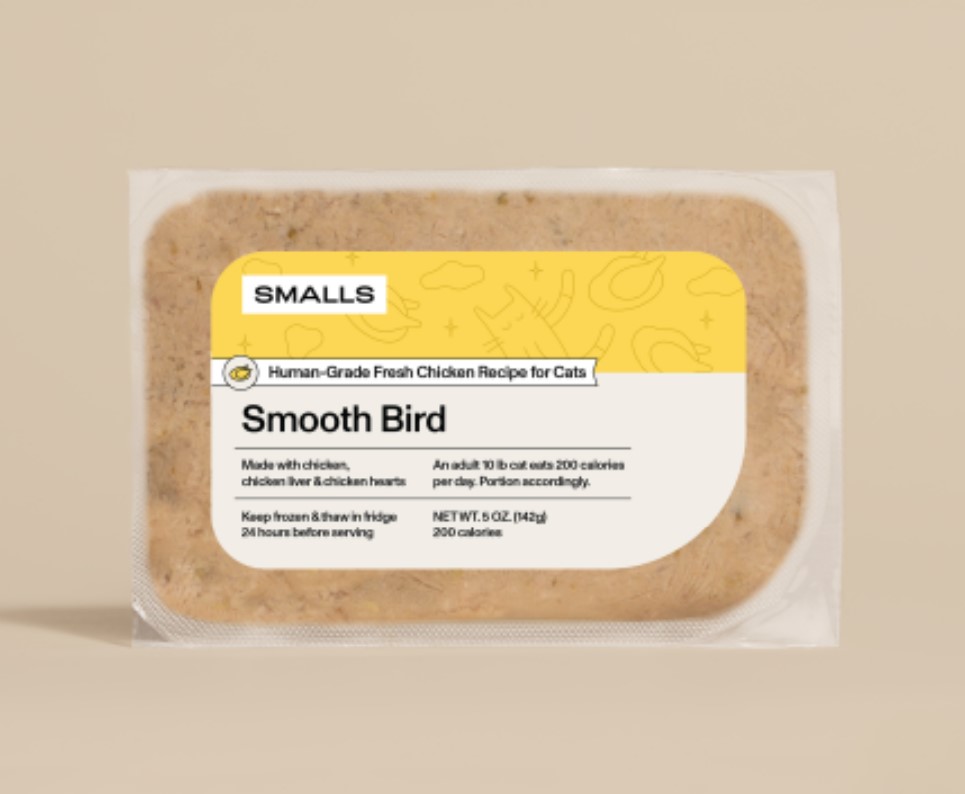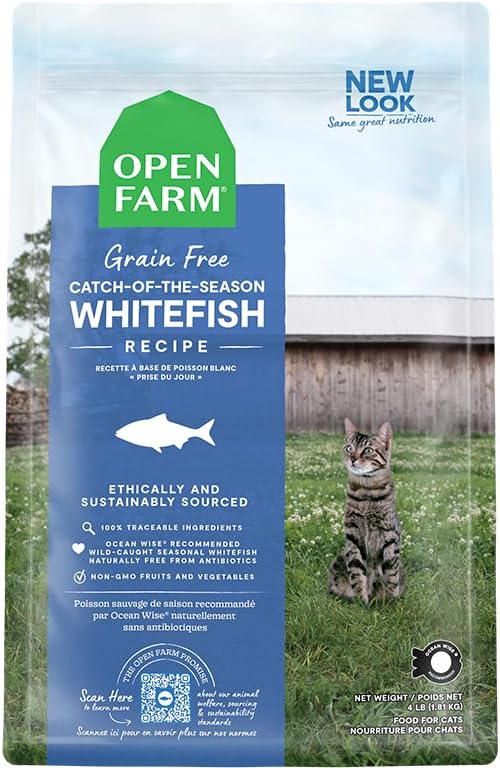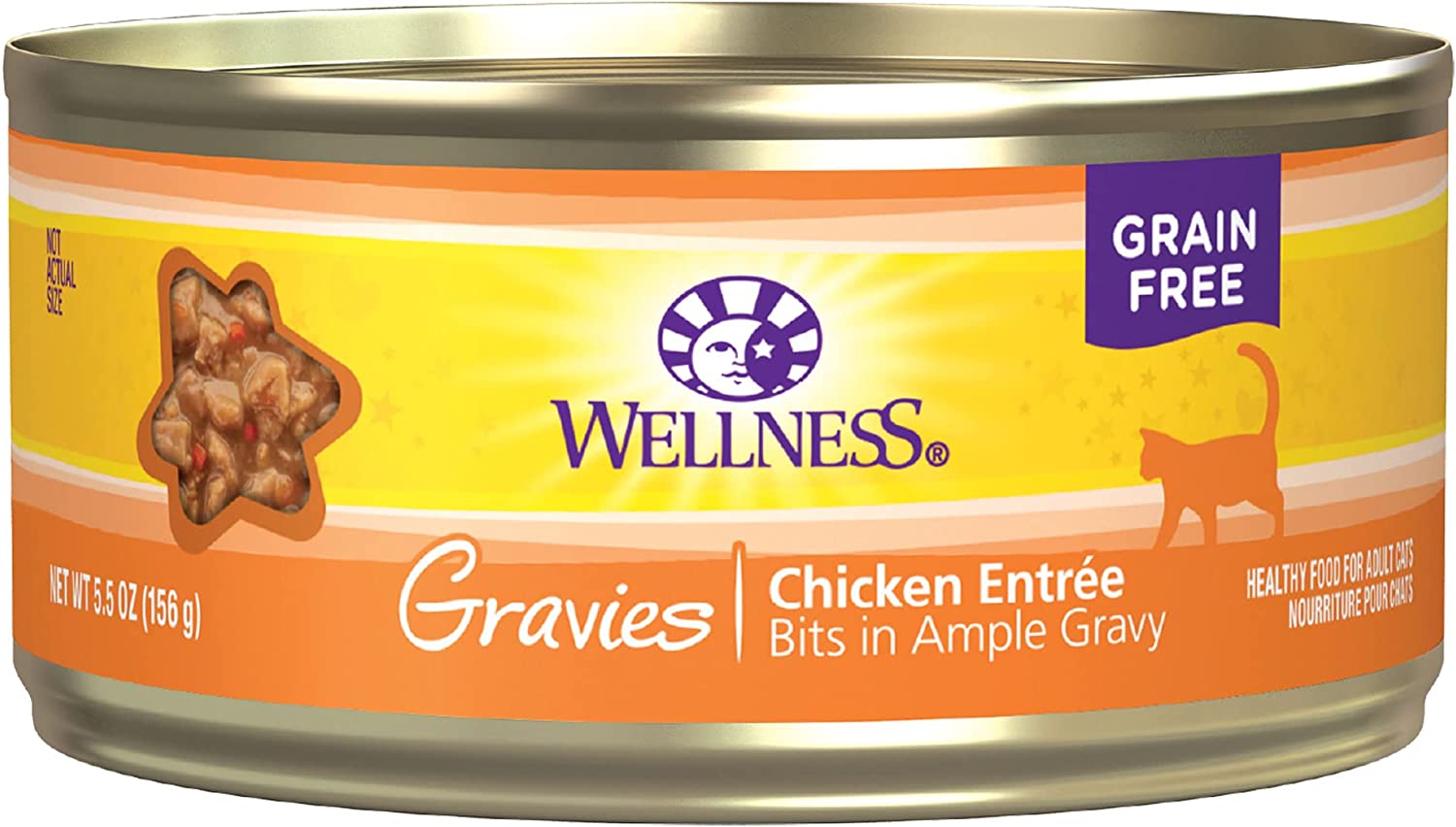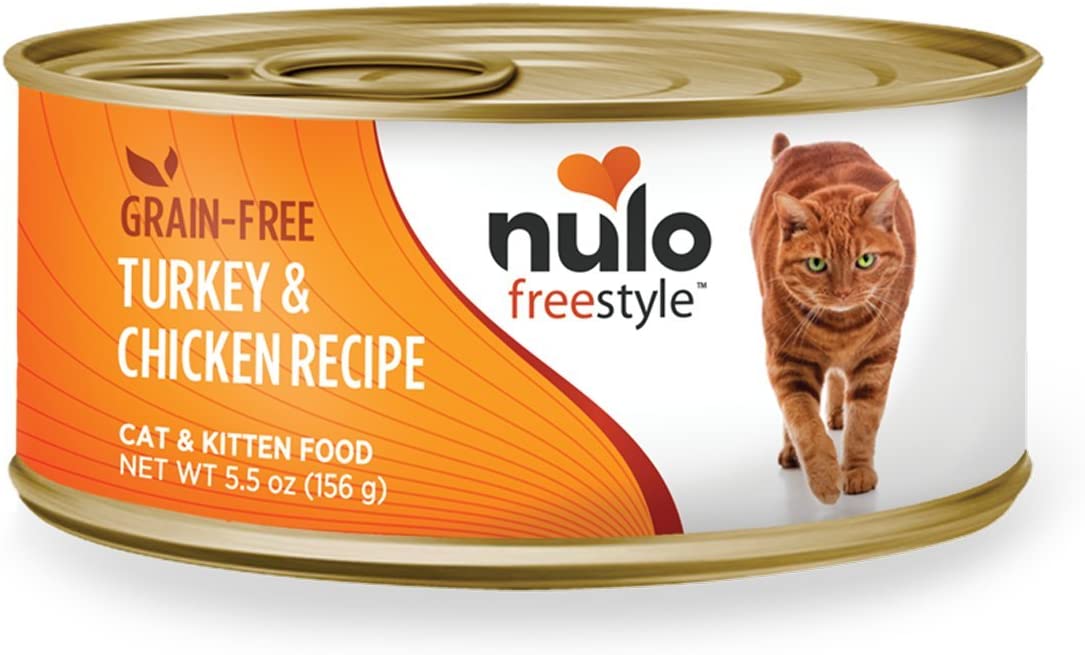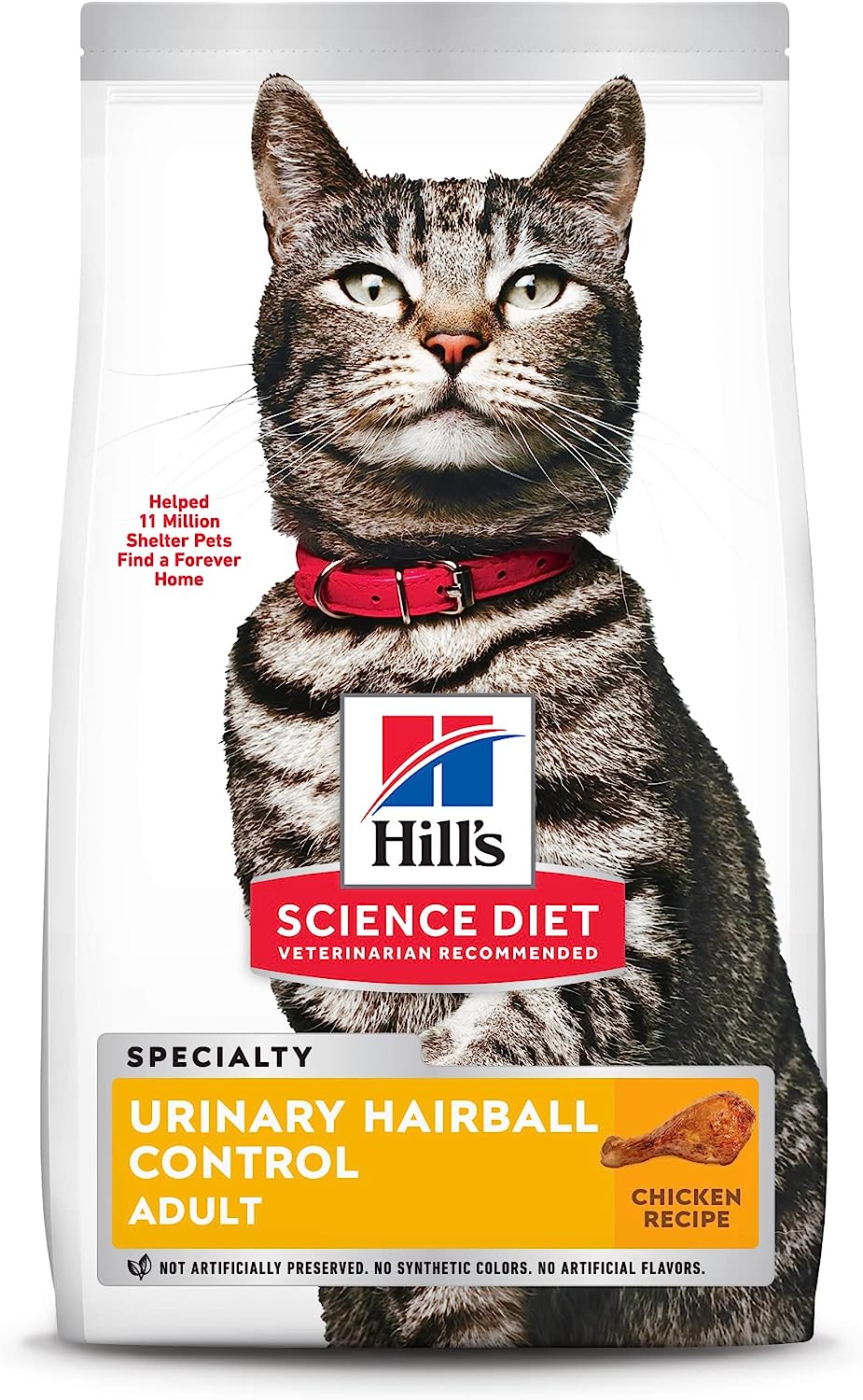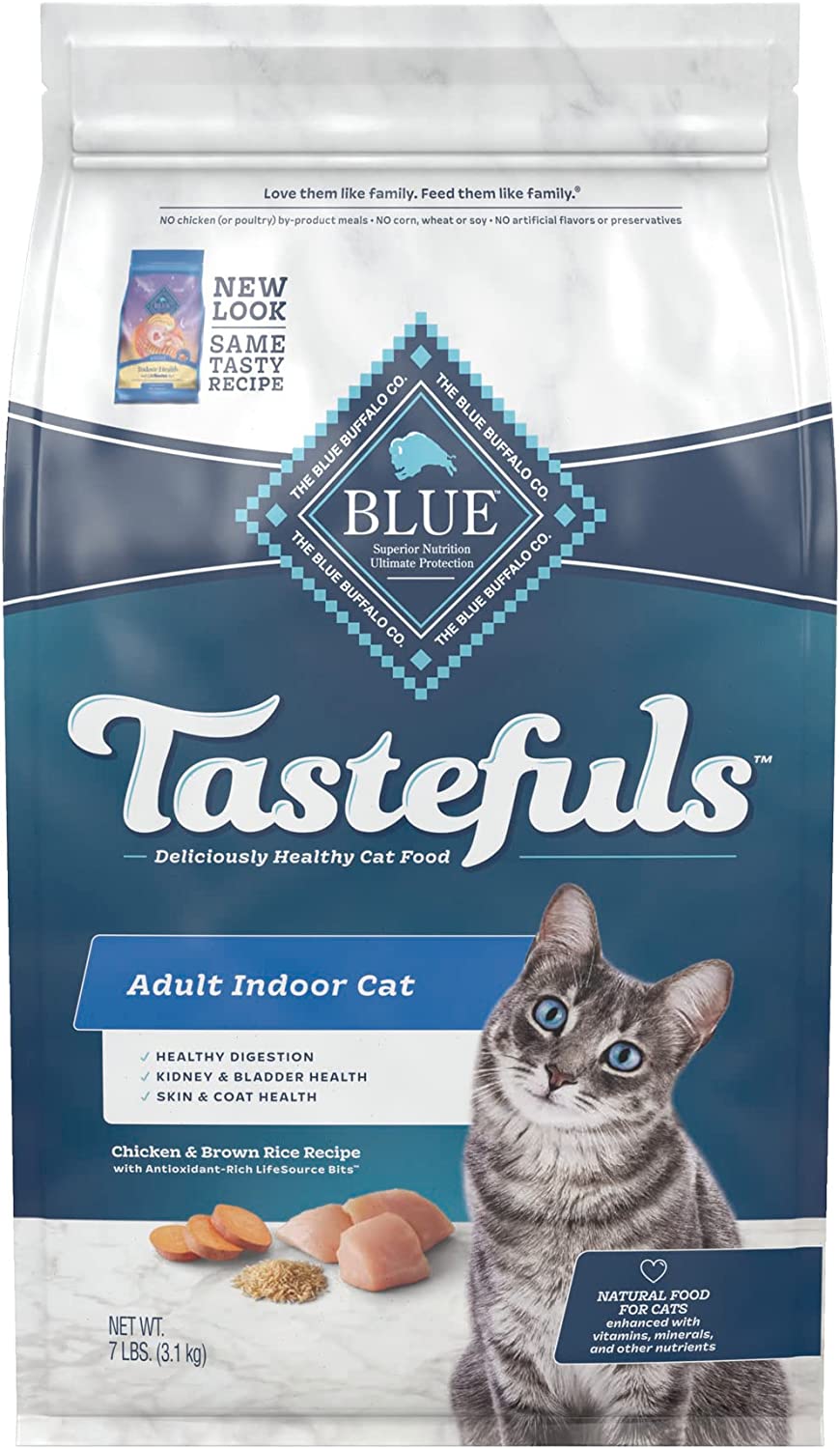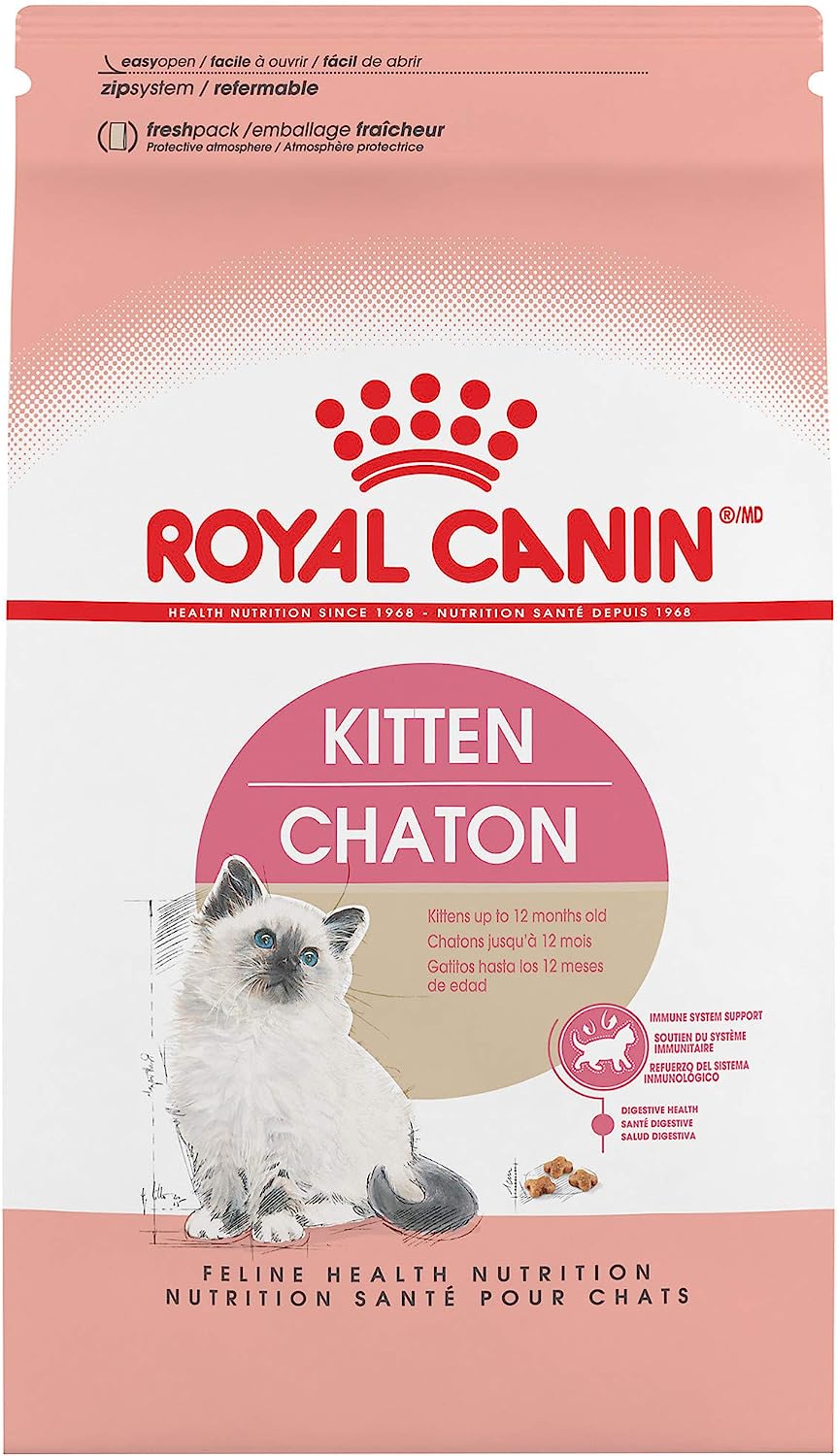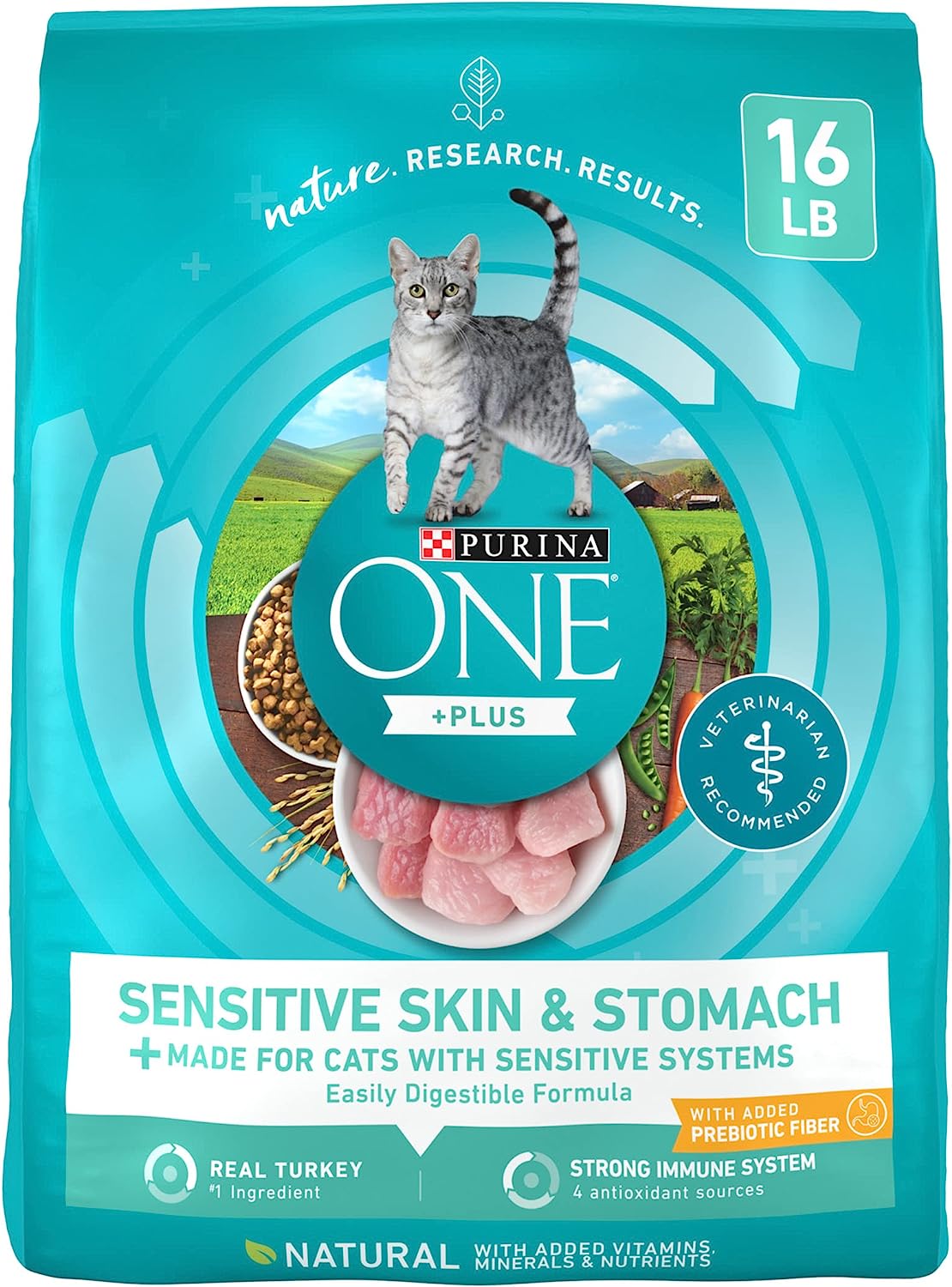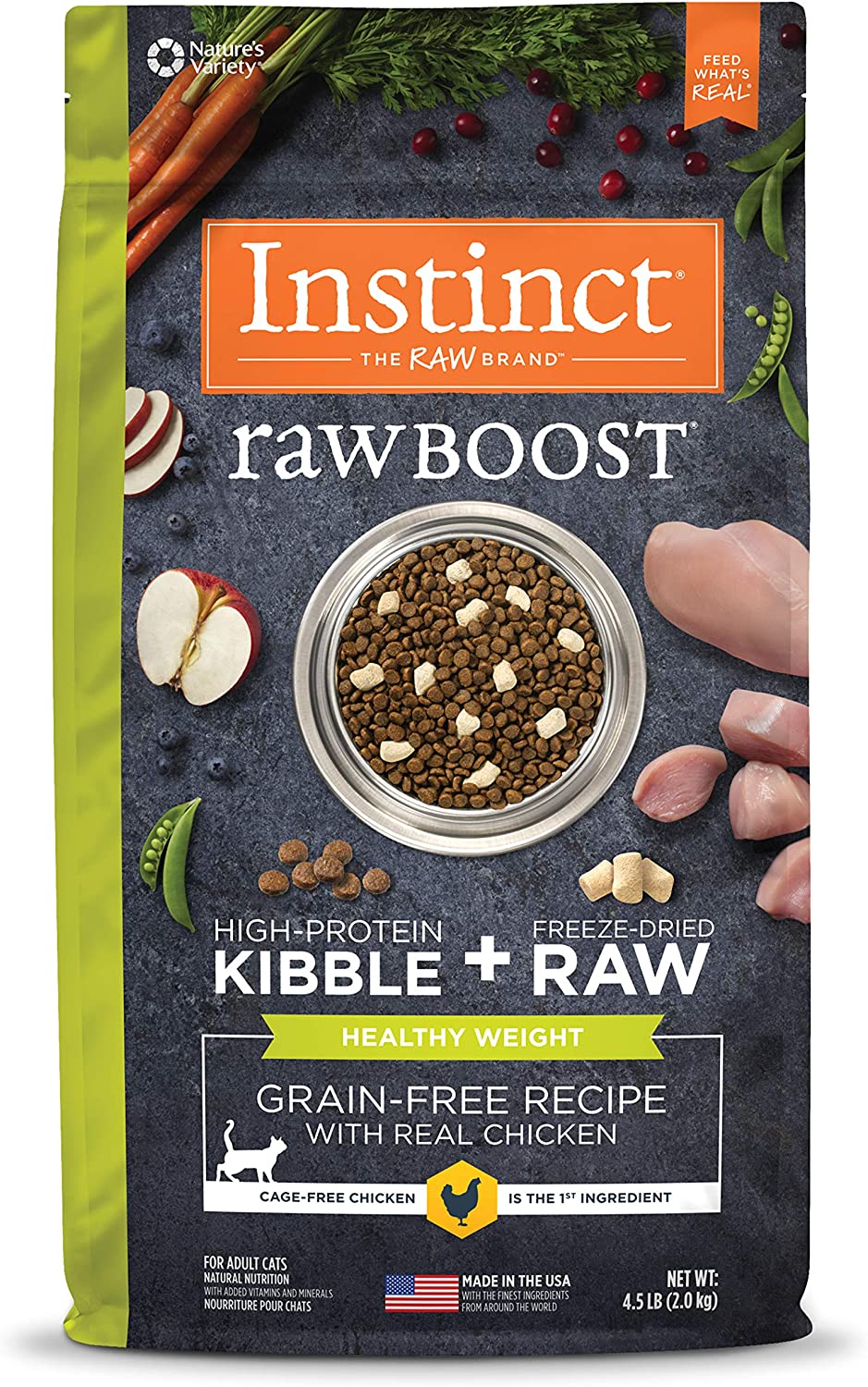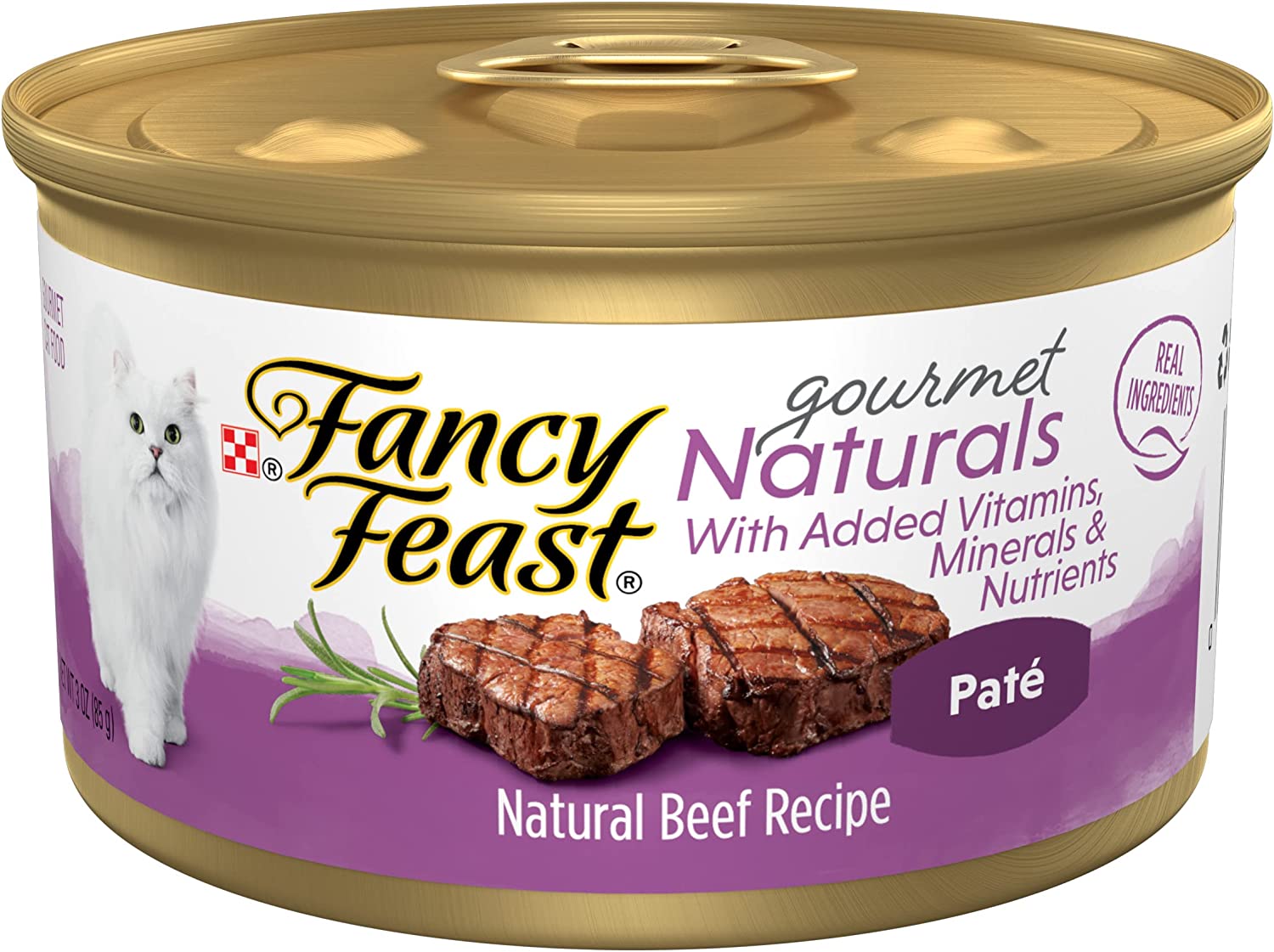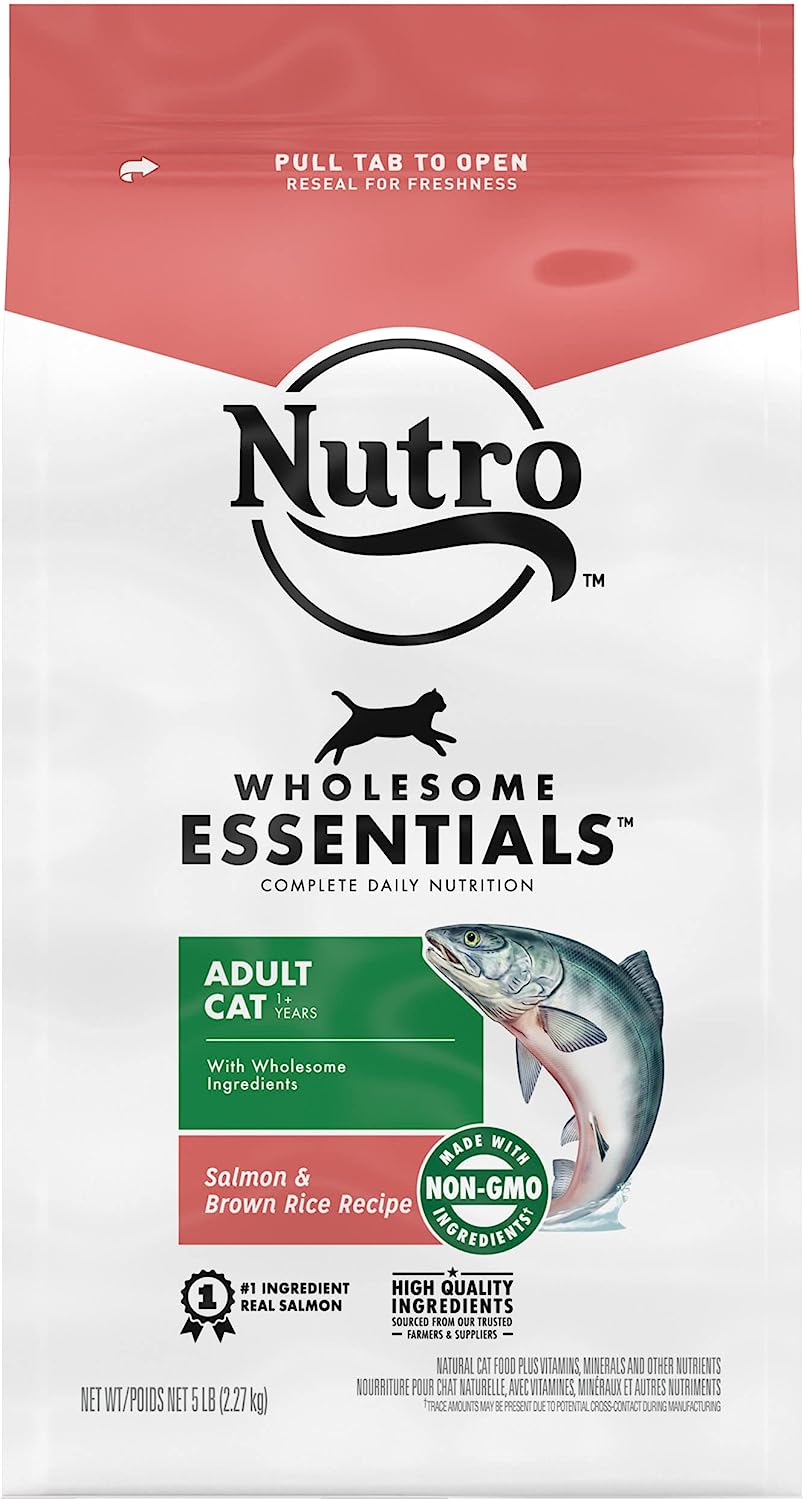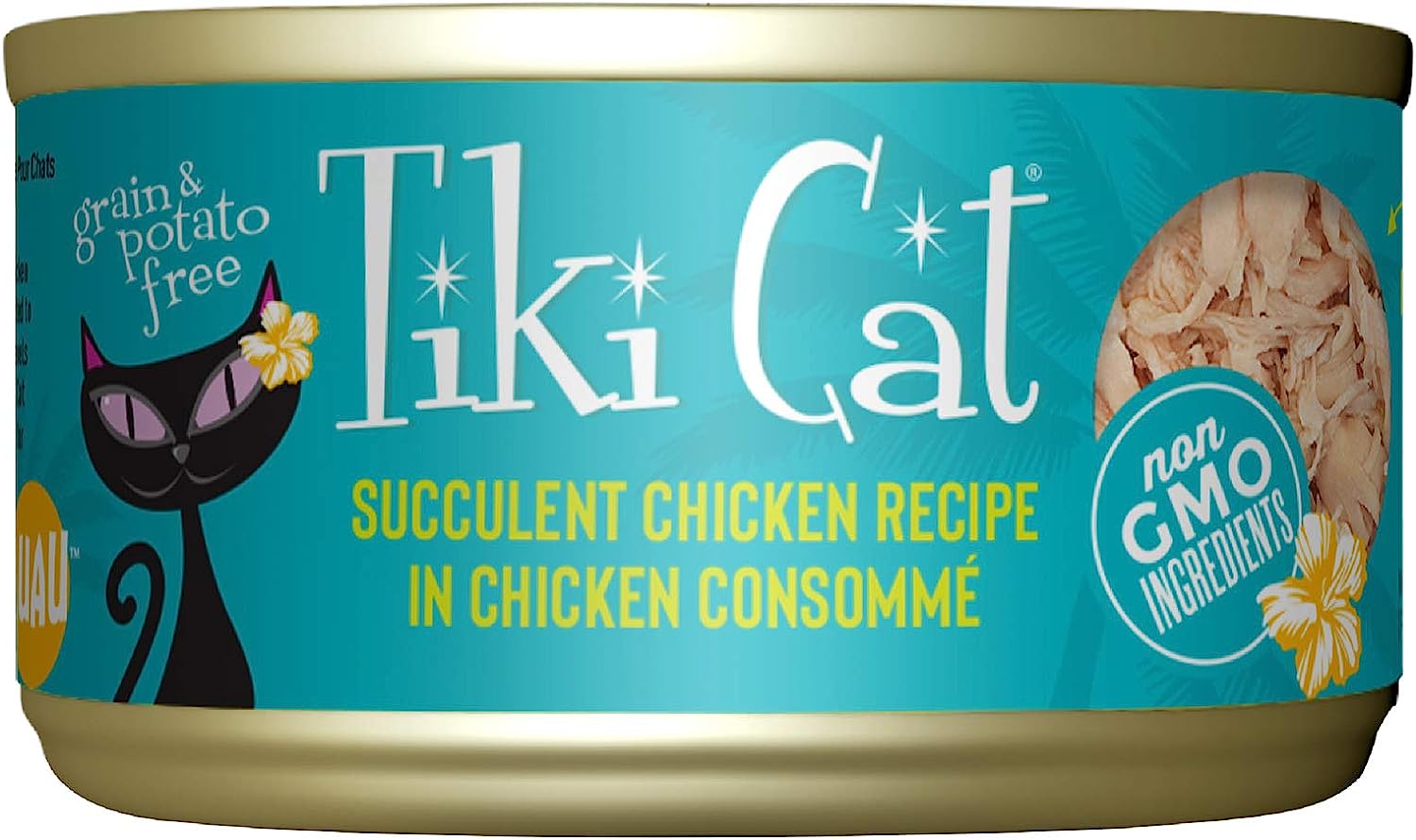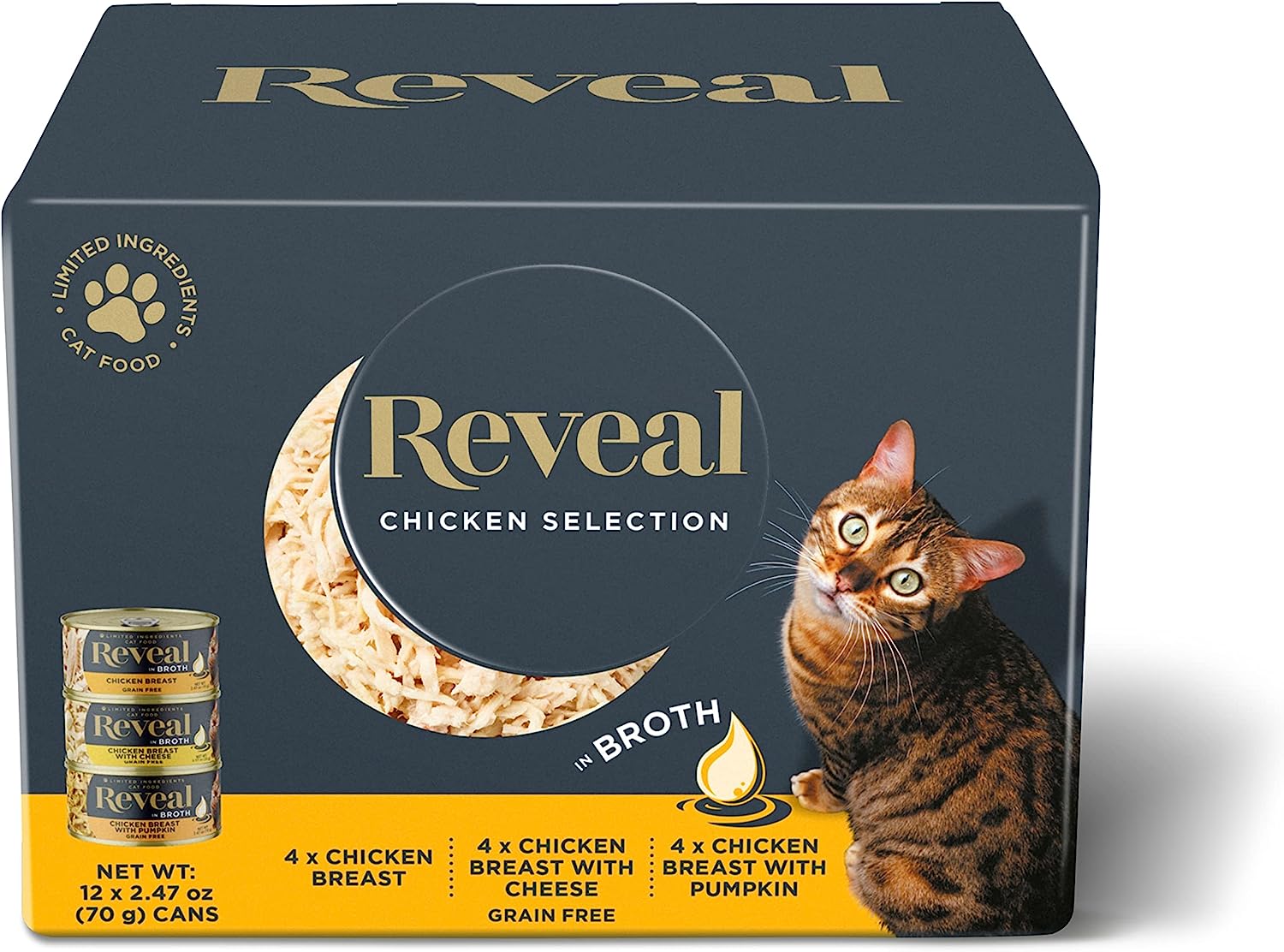iHeartCats is reader-supported. When you buy via links on our site, we may earn an affiliate commission at no extra cost to you.
Choosing the best cat food is essential for the health and well-being of your feline companion. Yet, with a plethora of options available in the market, finding the right choice can get overwhelming. In this comprehensive guide, we’ll explore the frequently asked questions about cat foods and highlight the key factors to consider when making your selection. And in no time, your cat will be happily munching on their new favorite food!
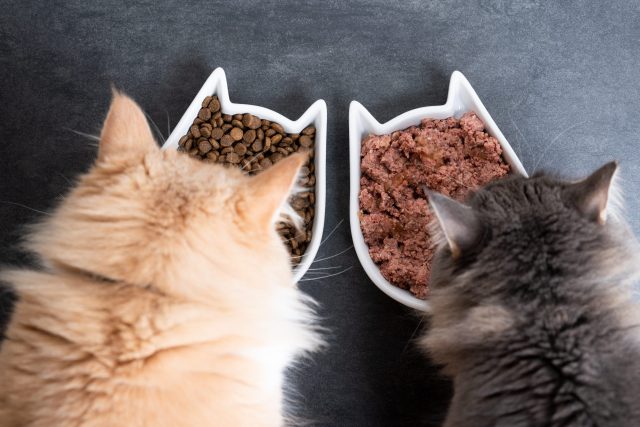
Buyer’s Guide: What Factors to Consider When Choosing The Best Cat Food
When selecting the food for your feline companion, consider these factors:
Nutritional Content
Ensure the food provides a complete and balanced diet, meeting the specific nutritional needs of cats as dictated by the Association of American Feed Control Officials (AAFCO). Look for high-quality animal protein sources, healthy fats, essential vitamins and minerals, and limited or no fillers.
Life Stage
Consider your cat’s age and life stage, as nutritional requirements vary. Kittens, adult cats, and senior cats have different needs, and specialized formulas are available for each stage.
RELATED: Dietary Considerations for the 6 Stages of Your Cat’s Life
Ingredients
Check the ingredient list on any food you’re considering and prioritize high-quality protein sources. Avoid artificial additives, excessive fillers, and by-products. If your cat has sensitivities, always ensure the inflammatory items aren’t included in the ingredients list.
RELATED: 10 Ingredients You DO Want To See In Your Cat’s Food
Brand Reputation
Opt for reputable cat food brands known for their commitment to quality and safety. Research their manufacturing processes, quality control measures, and adherence to industry standards. Reading reviews can also help inform you about the quality of a brand.
Veterinary Recommendations
Consult your veterinarian for guidance on the best cat food options. They know your cat’s health conditions, allergies, or sensitivities. Having this history about your kitty enables them to provide suitable recommendations.
Price and Budget
While cost shouldn’t be the sole determining factor, consider your budget when choosing food. Quality cat food may come at a higher price, but it can contribute to your cat’s long-term health and potentially reduce veterinary expenses.
Special Dietary Needs
If your cat has any specific dietary requirements, such as food allergies or sensitivities, select a food that addresses those needs. Some cats may require grain-free, limited-ingredient, or veterinary-prescribed diets.
Cat’s Preferences
Cats have individual preferences for flavors and textures. While it may take some trial and error, observe your cat’s response to different options and choose one they enjoy and readily consume.
By considering these factors, you can make an informed decision and choose the best cat food that supports your cat’s overall health, vitality, and happiness. Now, let’s check out the cat food reviews!
The 15 Best Cat Foods to Please Hungry Kitties
1 – Smalls Fresh Wet Cat Food – Best Cat Food Subscription Service
A surefire win for best fresh cat food, Smalls provides high-quality, human-grade ingredients in a variety of flavorful meals. Their subscription-based service ensures a consistent, hassle-free supply of fresh, balanced nutrition for your cat. Smalls offers fish, beef, chicken, and turkey recipes in multiple textures. Despite a premium price, the visible health benefits are worth the investment.
Pros:
- High-quality ingredients
- No artificial preservatives, flavors, or colors
- Easy signup and start
- Positive health effects, such as shinier coats and increased energy
Cons:
- Premium price point may not be affordable for all cat parents
- Subscription model may not be ideal for those who prefer to shop in-store
- Requires refrigeration, which may be inconvenient for some
2 – Open Farm Catch-of-The-Season Whitefish Dry Cat Food – Best Grain-Free Cat Food
Open Farm Catch-of-The-Season Whitefish Grain-Free Dry Cat Food stands out for its sustainably-sourced, high-protein ingredients. The grain-free recipe and high prebiotic fiber content help with digestibility and are ideal for cats with grain sensitivities. The brand’s transparency about its sourcing is also commendable. It’s pricier than typical cat food, but the quality justifies the cost.
Pros:
- High-quality ingredients
- Fishing practices are 100% Ocean Wise certified
- Uses local produce and superfoods
- Cats love the flavor
- Highly rated by cat parents
Cons:
- Higher cost compared to typical cat food brands
- Cats with fish allergies cannot consume this product
3 – The Honest Kitchen Dehydrated Grain Free Chicken Cat Food – Best Dehydrated Cat Food
- Easy to prepare; Just add water
- #1 ingredient is always free-range chicken
- 100% human-grade ingredients
- Prepared in the USA
- Suitable for kittens & adult cats
- 30% off orders $30+ with code IHEARTCATS30 when you shop at TheHonestKitchen.com
Also available at Chewy.com and Petco.com
The Honest Kitchen Dehydrated Grain-Free Chicken Cat Food features real chicken as the primary protein source and never includes any grains or artificial additives, as this cat food prioritizes feline health. The dehydration process retains the natural nutrients and flavor, and rehydration is effortless. From this two-pound box, you can make eight pounds of food! Choose from multiple flavors.
Pros:
- 30% off orders $30+ with code IHEARTCATS30 when you shop at TheHonestKitchen.com
- Artificial preservative, color, and flavor free
- No feed-grade by-products, fillers
- Free of GMO ingredients, corn, wheat, or soy
Cons:
- Some cats may not care for the texture
- Food bag isn’t resealable
4 – Wellness Complete Health Gravies Grain-Free Canned Cat Food – Best Wet Cat Food
Wellness Complete Health Gravies Grain-Free Canned Cat Food serves up both nutrition and palatability. Its grain-free formulation benefits sensitive felines, and the gravy format encourages hydration. Real meat chunks ensure a protein-rich diet, promoting overall health. Plus, you’ll never find any added carrageenan, wheat, wheat gluten, corn, soy, artificial colors, or preservatives in this best-can cat food.
Pros:
- No artificial additives or preservatives
- Lots of rich, thick gravy
- Chunky meat texture
- Highly rated, trusted cat food brand
Cons:
- Some cats may need time to adapt to the gravy format
- May be more expensive than other wet cat food options
- The smell might be unappealing to cat parents
5 – Nulo Cat Freestyle Pate Canned Cat & Kitten Food – Best Grain-Free Wet Cat Food
Nulo Cat Freestyle Pate Canned Cat & Kitten Food delivers superior nutrition with a high-protein, low-carb recipe cats love. The grain-free pate texture is perfect for kittens and adult cats, especially cats with diagnosed grain allergies and sensitivities. Fortified with essential vitamins, minerals, and taurine, it’s yummy and supports overall health.
Pros:
- First 3-4 ingredients are proteins
- Uses low glycemic sources like pumpkin and carrots
- Multiple can sizes and amounts available
- Manufactured in the USA
Cons:
- Pricier than many other cat food options
6 – Hill’s Science Diet Dry Cat Food, Adult, Urinary & Hairball Control – Best Cat Food for Urinary Health
Hill’s Science Diet Dry Cat Food, Adult, Urinary & Hairball Control is specifically formulated to combat common feline issues. The blend of natural fiber sources minimizes hairball formation, while the balanced minerals support urinary health. And as a vet-recommended brand, this Hill’s formula is one of the best cat foods for urinary crystals.
Pros:
- Free from artificial colors, flavors, or preservatives
- Added omega 6s and vitamin E for shiny fur
- Made with natural ingredients
- Highly rated by thousands of cat parents
Cons:
- Higher price point than some other dry cat food brands
7 – Purina Pro Plan Senior Cat Food With Probiotics for Cats – Best Senior Cat Food
Purina Pro Plan Senior Cat Food with Probiotics offers an age-optimized diet for senior cats. Its high-protein content and added probiotics support muscle maintenance and gut health. The easily digestible recipe and kibble size are tailored for easier chewing.
Pros:
- Nutrient-dense recipe
- Purina is a well-known, trusted cat food brand
- Two flavor choices
- Made in US facilities
Cons:
- Some cats may need time to adjust to the taste
- Some owners may prefer wet food for their senior cats
8 – Blue Buffalo Tastefuls Indoor Natural Adult Dry Cat Food – Best Cat Food for Indoor Cats
Blue Buffalo Tastefuls Indoor Natural Adult Dry Cat Food offers a balanced diet tailored to indoor cats. Real meat as the first ingredient ensures high protein, while fiber-rich ingredients help manage hairballs. The cold-form process behind this dry cat food preserves potency, and the recipe is fortified with vitamins and minerals to support overall health.
Pros:
- Formula contains BLUE’s exclusive LifeSource Bits
- Omega 3 and 6 fatty acids for skin and coat health
- Free from artificial preservatives, colors, or flavors
- Highly rated by cats and cat parents
- Made in the USA
Cons:
- Reviewers report a strong smell
9 – Royal Canin Feline Health Nutrition Kitten Dry Cat Food – Best Kitten Food
Royal Canin Feline Health Nutrition Kitten Dry Cat Food is expertly formulated for growing kittens. Its small-sized kibble accommodates kitten jaws, promoting better chewing. The blend of antioxidants, vitamins, and prebiotics supports the immune system and digestive health. Though premium-priced, its benefits for early life growth are invaluable.
Pros:
- Formulated for the nutritional needs of growing kittens
- Yummy flavor for kittens
- Easy to chew
- One of the best-rated kitten foods available
Cons:
- Not suitable for kittens with specific dietary restrictions or allergies
- Transition from mother’s milk or other kitten food may initially cause digestive upset
10 – Purina ONE Sensitive Stomach, Sensitive Skin Natural Dry Cat Food – Best Cat Food for Sensitive Stomachs
Purina ONE Sensitive Stomach, Sensitive Skin Natural Dry Cat Food is an easily digestible recipe that minimizes stomach upset while omega fatty acids support skin health. Real turkey, as the first ingredient, helps support strong muscles and a healthy heart. Includes four antioxidant sources that help support a healthy immune system.
Pros:
- Good for sensitive tummies
- Easy-to-chew pellet kibbles
- Includes prebiotic fiber
- Free from artificial flavors and preservatives
- Preferred by thousands of cat parents
Cons:
- Not suitable for cats with poultry allergies
11 – Instinct Raw Boost Healthy Weight Grain Free Recipe – Best Cat Food For Weight Management
Instinct Raw Boost Healthy Weight Grain-Free Recipe offers a unique blend of high-protein kibble and freeze-dried raw meat. It’s grain-free and supports weight management with fat-burning L-Carnitine, ideal for cats needing to shed a few pounds for a healthier weight. Raw is natural, made from real meat & whole food ingredients, protein-packed & minimally processed.
Pros:
- High-protein recipe promotes lean muscle development
- Cats love the taste, and cat parents don’t mind the smell
- Ideal for cats with grain sensitivities
- Aides in digestion
Cons:
- Some cats may not like the taste or texture of freeze-dried raw pieces
- Higher price point compared to other cat food options
12 – Fancy Feast Purina Grain Free Wet Cat Food – Best Pate Cat Food
Fancy Feast Purina Grain Free Wet Cat Food offers a delectable variety of flavors and textures that cats adore. It’s grain-free formulation and real meat provide high-quality protein and cater to cats with sensitivities. The moist texture encourages hydration. While some might find the aroma strong, it’s a hit among felines.
Pros:
- Suitable for cats with grain sensitivities
- Contains no corn or soy
- Affordably priced
- Trusted brand that cats love
Cons:
- Some owners may find the aroma of certain varieties strong
- Some varieties may contain by-products
13 – NUTRO WHOLESOME ESSENTIALS Natural Dry Cat Food – Best Dry Cat Food
NUTRO WHOLESOME ESSENTIALS Natural Dry Cat Food combines nutrition and taste in a healthy formula. Real meat as the first ingredient ensures protein-rich nutrition. Plus, the inclusion of essential antioxidants supports the immune system, while fiber aids in digestion. It’s free of artificial elements, but transitioning to this diet may need some time for certain cats.
Pros:
- Real meat first
- Includes essential antioxidants for immune health
- Natural fiber sources aid in healthy digestion
- Cooked in US facilities
Cons:
- Not suitable for cats with chicken or grain allergies
14 – Tiki Cat Luau Shredded Meat – Best Shredded Wet Cat Food
Tiki Cat Luau Shredded Meat offers a gourmet dining experience with its shredded meat texture, appealing to even the pickiest eaters. Made with natural, high-quality proteins like chicken, fish, and seafood, it delivers a protein-rich diet with a high moisture content. The grain-free recipe is suitable for cats with grain sensitivities. However, the premium price tag may not be suitable for all budgets.
Pros:
- Chicken is the first ingredient
- Grain, potato, and filler free
- Non-GMO ingredients
- Cats love the flavor
- Suitable for cats of all ages
Cons:
- Premium price compared to other cat food options
15 – Reveal Natural Wet Cat Food – Best Limited Ingredient Cat Food
Reveal Natural Wet Cat Food offers felines a high-quality, natural meal option. It focuses on natural animal proteins, such as chicken, fish, and beef, providing essential nutrients for optimal health. The grain-free recipe is suitable for cats with grain sensitivities. The transparent packaging showcases the wholesome ingredients.
Pros:
- Made with natural ingredients
- Cats love the taste
- Doesn’t smell strong like other foods
- No artificial colors, flavors, or preservatives
Cons:
- Small portions
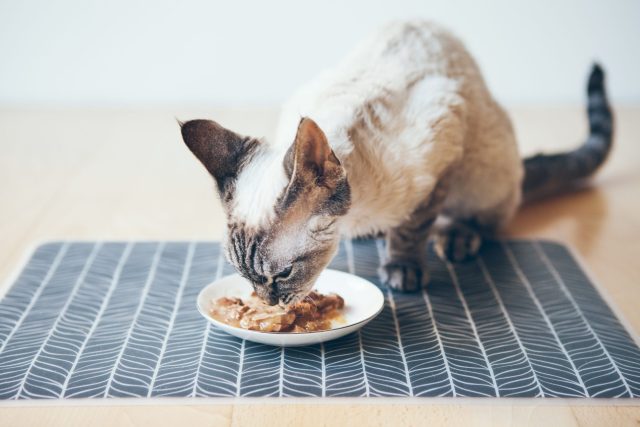
FAQs About the Best Cat Foods
Should I feed my cat wet or dry food?
Both wet and dry cat food have their advantages, and it ultimately depends on your cat’s specific needs and preferences. Here are some points to consider:
Wet Cat Food
Wet cat food typically has a higher moisture content, which can help with hydration, especially for cats that don’t drink much water. It can be beneficial for cats with urinary tract issues or kidney problems. Wet food also tends to be more palatable and easier to eat for cats with dental issues or older cats. However, it can be more expensive and spoil more quickly if not consumed within a certain timeframe.
Dry Cat Food
Dry cat food is convenient, has a longer shelf life, and can be left out for free feeding without the risk of spoilage. It may help with dental health by reducing plaque and tartar buildup due to the crunchy texture. Dry food is often more cost-effective than wet food. However, it contains less moisture, so it may not provide as much hydration, and some cats may be picky about the taste or have difficulty chewing it.
Many cat parents offer a combination of wet and dry food to provide a balanced diet. Consulting your veterinarian can help you determine the best choice based on your cat’s specific circumstances.
How often should I feed my cat?
The frequency of feeding your cat can depend on several factors, including your cat’s age, health, and individual preferences. Here are some general guidelines for feeding frequency:
- Kittens (up to 6 months): Kittens have small stomachs and high energy requirements, so they typically need to be fed more frequently. They may require 3-4 meals daily, with access to fresh water at all times.
- Adult cats (6 months and older): Most adult cats can be fed two meals a day, spaced out approximately 12 hours apart, but no longer than that. This feeding schedule can help establish a routine and prevent overeating. Adjust the portion sizes according to your cat’s needs and follow the feeding guidelines on the cat food packaging.
- Senior cats (around seven years and older): Older cats may benefit from smaller, more frequent meals due to potential changes in their metabolism and digestion. Consult your veterinarian for specific recommendations tailored to your senior cat’s needs.
It’s important to note that free-feeding, where food is left out all day for the cat to eat at will, may lead to overeating and weight gain. However, some cats may prefer this feeding method and can self-regulate their intake. If you choose to free-feed, monitor your cat’s weight and adjust the amount of food accordingly.
Remember to provide fresh water at all times for your cat to stay hydrated. Also, if you have any concerns about your cat’s weight, specific dietary needs, or feeding schedule, consult a veterinarian for personalized advice.
Can I feed my cat homemade food?
Feeding your cat homemade food is possible but requires careful consideration and proper formulation to ensure your cat receives a nutritionally balanced diet. Cats have specific dietary requirements, including essential nutrients such as taurine, which is found naturally in animal tissues.
If you’re considering homemade cat food, it’s imperative to consult with a veterinary nutritionist or your veterinarian to develop a recipe that meets your cat’s nutritional needs. They can guide you on the appropriate proportions of ingredients, supplements, and potential dietary considerations.
RELATED: Cooking For Kitty: The Benefits Of Homemade Cat Food
How do I switch my cat’s food?
When transitioning your cat’s food, it’s important to do so gradually over a period of 7 to 10 days to avoid gastrointestinal upset. Here’s a general guideline for transitioning:
- Start by mixing a small amount (around 25%) of the new food with the old food.
- Gradually increase the proportion of the new food while decreasing the old food over several days.
- Observe your cat’s response during the transition. If any digestive issues or reluctance to eat occur, slow the process and spend more time at each stage.
- Complete the transition when your cat is eating only the new food.
Keep in mind that individual cats may have different sensitivities, so adjust the transition speed as needed. If you encounter any concerns or if your cat refuses to eat during the process, consult your veterinarian for guidance.
What ingredients should I avoid in cat food?
While it’s essential to consult with your veterinarian for personalized advice, here are some ingredients that cat caretakers often try to avoid:
- Fillers: Look for cat foods that minimize or exclude fillers, such as corn, wheat, and soy. Cats are obligate carnivores and require a diet primarily based on animal protein.
- Artificial additives: Avoid cat foods containing artificial colors, flavors, and preservatives, as they may have potential health risks.
- High carbohydrate content: Cats have a limited ability to digest carbohydrates, so it’s best to choose cat foods with a lower carbohydrate content. Look for foods that have a higher proportion of protein and healthy fats.
- Unspecified meat by-products: It’s generally recommended to select cat foods that specify the type of meat used rather than generic terms like “meat by-products.”
Remember, each cat’s dietary needs may vary, so discussing specific ingredient concerns with your veterinarian can help you make informed decisions about your cat’s food.
Can I feed my cat a vegetarian or vegan diet?
Feeding cats a vegetarian or vegan diet is not recommended. Cats are obligate carnivores, which means they have specific nutritional requirements that can only be met through animal-derived sources. Their bodies are adapted to thrive on a diet that includes high-quality animal proteins like meat. Some essential nutrients that cats require, such as taurine, arachidonic acid, vitamin A, and vitamin D, are either absent or present in inadequate amounts in plant-based foods. These nutrients are crucial for a cat’s overall health, including vision, heart function, reproductive system, and immune system.
Attempting to feed a cat a vegetarian or vegan diet without careful consideration and proper supplementation can lead to severe health consequences and nutritional deficiencies. Cats may experience muscle wasting, weight loss, lethargy, skin issues, and other health problems if they do not receive the necessary nutrients from animal sources. Consulting a veterinarian is always advisable when making dietary choices for your cat.
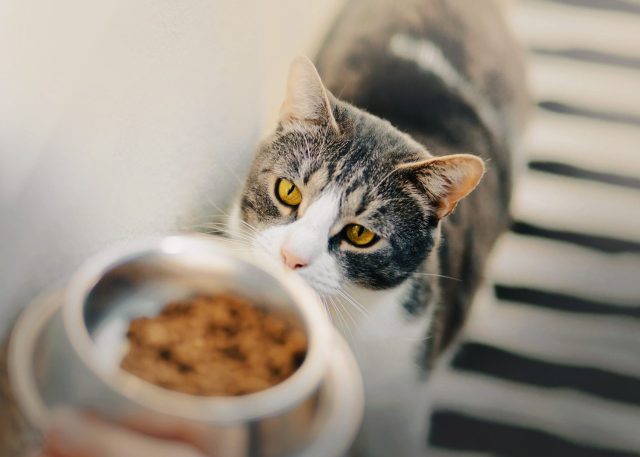
Conclusion
Selecting the best cat food requires careful consideration of your cat’s nutritional needs, preferences, and any specific dietary requirements. By understanding the various types, essential nutrients, and the factors to consider, you can make an informed decision that promotes your cat’s optimal health and happiness. Consulting with your veterinarian is crucial in choosing the most suitable food for your feline friend.
[templatera id= “3493224”]

